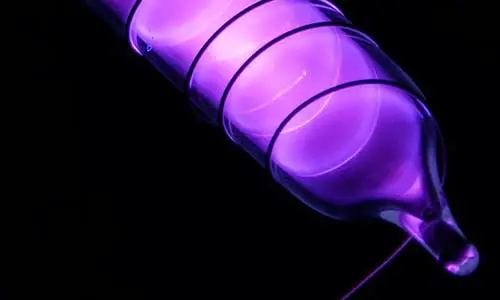Argon is a chemical element having symbol Ar and atomic number 18. It is a noble gas found in the group 18 of the periodic table. It was the first noble gas to be discovered by Lord Rayleigh and Sir William Ramsay in year 1894. The name Argon is derived from the Greek “Argos” which means inactive or idle. Argon is an inert, colorless, odorless noble gas used in fluorescent lights and in welding. The most common form of argon is an isotope of argon-40 which results from the radioactive decay of potassium-40. In the space, argon is present as isotope argon-36 that is formed when a two hydrogen nuclei or alpha particles get fused with silicon-32. Despite the fact that argon is an inert gas, it constitutes 0.94 percent of Earth’s atmosphere, as per the Royal Society of Chemistry.
Here we have some interesting facts about argon:
- Argon is majorly used in incandescent lightning. As it is an inert gas, it does not react with the filament used by light bulbs even at high temperatures. So, it makes the filament to last longer and even prevents the glass of bulb from blackening. Argon is also used for welding, medical instruments, preserving wine and in micro electronics.
- The first scientist to show that air contained gases other than nitrogen, oxygen and carbon-dioxide was an English Chemist, Henry Cavendish. But, he was not able to make out what another element found in the composition of air was. Afterwards, English scientist Lord Rayleigh and Scottish chemist Sir William Ramsay started doing experiments on the composition of air and presence of other gases in it. They were able to discover argon and other noble gases in year 1894.
- Potassium-argon and argon-argon dating help us to find the age of rocks. Potassium-40 decays to argon-40 and calcium-40, with a half-life of 1.25 billion years and the ratio of potassium-40 to argon-40 trapped in a rock helps to calculate for how long it has solidified.
- Argon is a non-toxic gas and has a low thermal conductivity for which it is used between the glass planes in high-efficiency double and triple glazing.
- Argon is known to have no biological functions. When it is mixed up with small amounts of mercury and activated by electricity, it will glow with a blue color.
- Argon is denser than air. Large amounts of it in a closed space can be fatal as it causes people to suffocate. When it is used as a gas laser, it emits out a blue-green color.
- Argon is even produced for commercial purposes by fractional distillation of liquidated air with catalytic burning of left over traces of oxygen.
- Argon is also used in laser technology where the argon fluoride (ArF) excimer laser is used to LASIK or PRK surgeries that rectify vision.
- The research is being done and various experiments in cell structures and in animals depict that argon could one day prove useful for fighting against brain damage after traumatic injuries or deprivation of oxygen.
- Its oxidation number being zero, argon gas does not from compounds easily.
- Argon is also used to store important documents in sealed argon-filled cases as it helps prevent decay.
- Argon-39 is used for ice coring. It is also being used for ground water dating and in technical SCUBA diving to inflate the dry suit, due to its nonreactive, heat isolating effect. The most exotic use of argon is in the tire of luxury cars.
- There have been no adverse environmental consequences of argon. Argon gas occurs naturally in the environment. The gas dissipates rapidly in well ventilated areas. The effects of argon on plants or animals are not currently known. It is not expected to harm aquatic life. Argon does not contain any ozone depleting chemicals and is not listed as a marine pollutant.











Leave a Reply